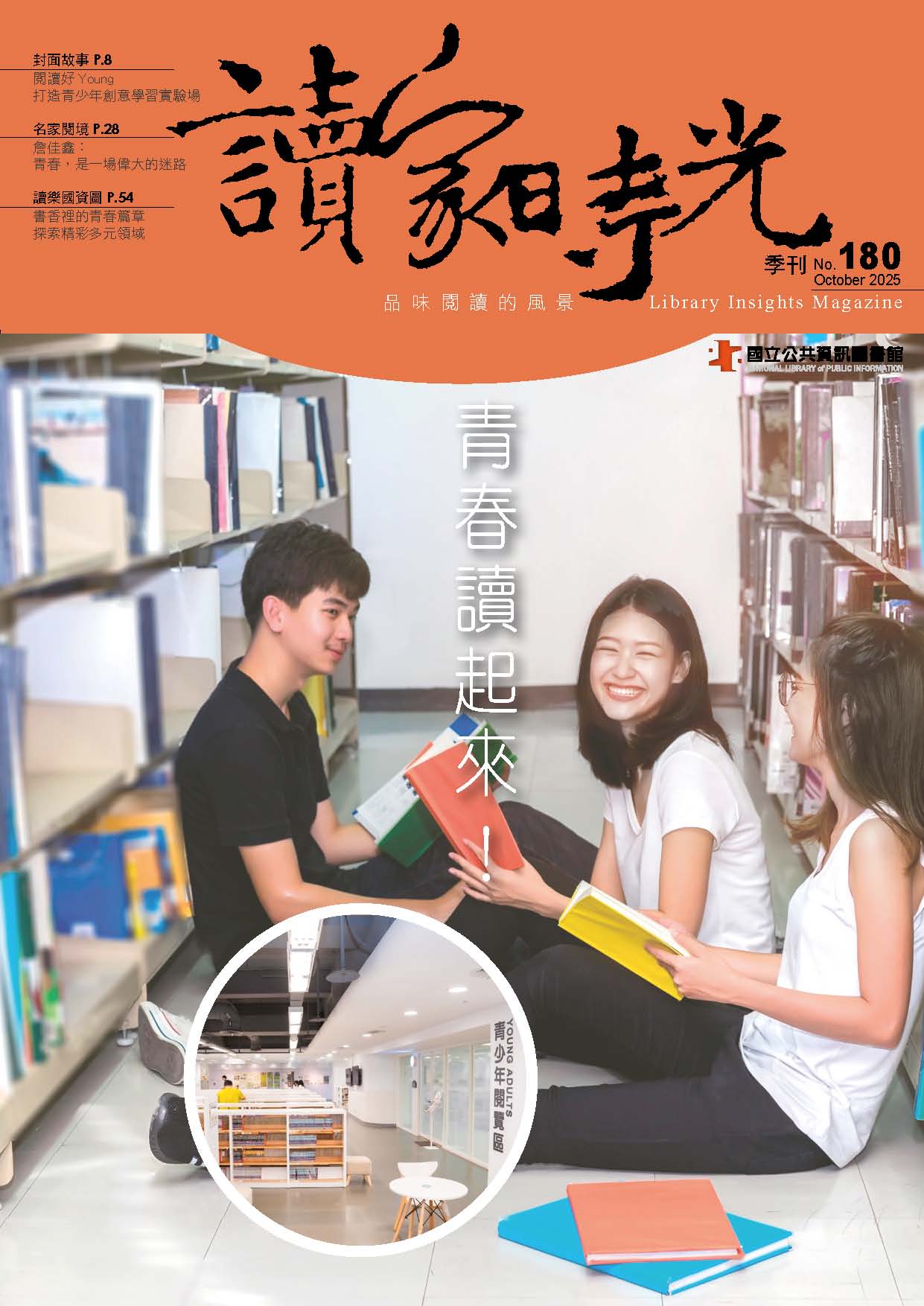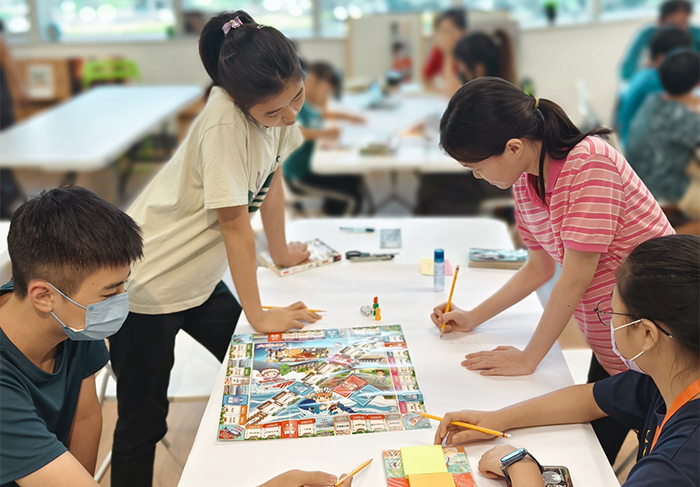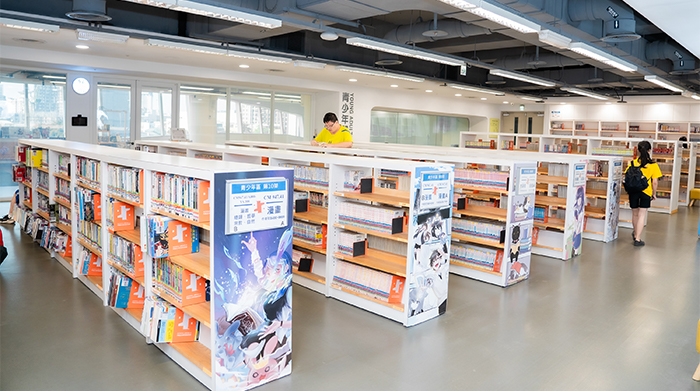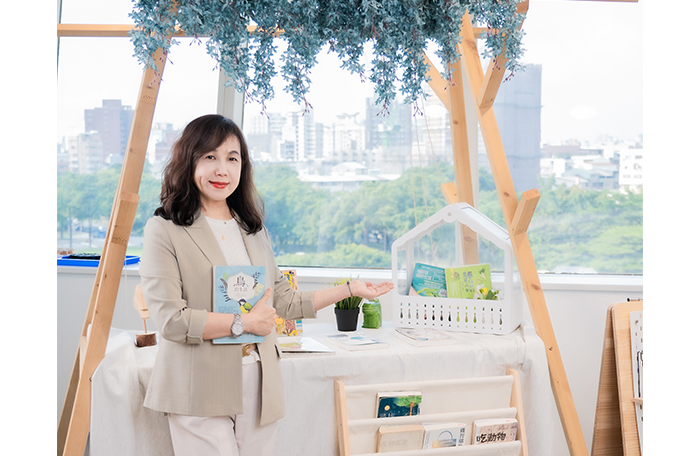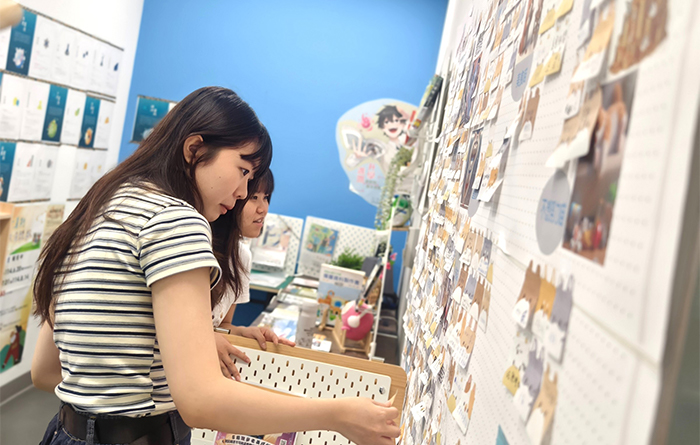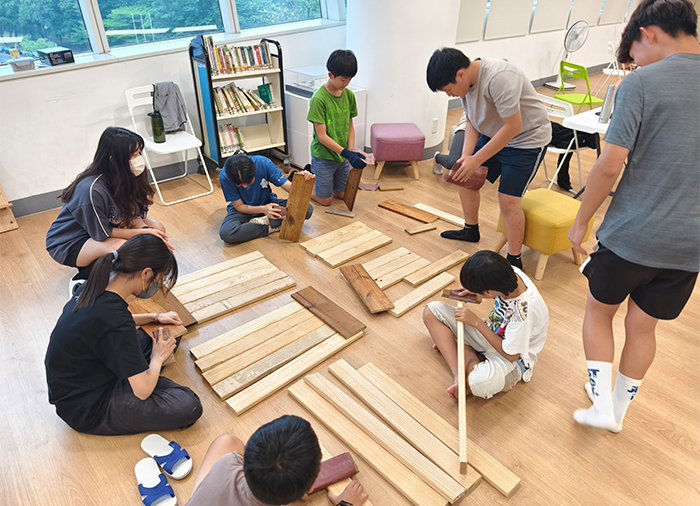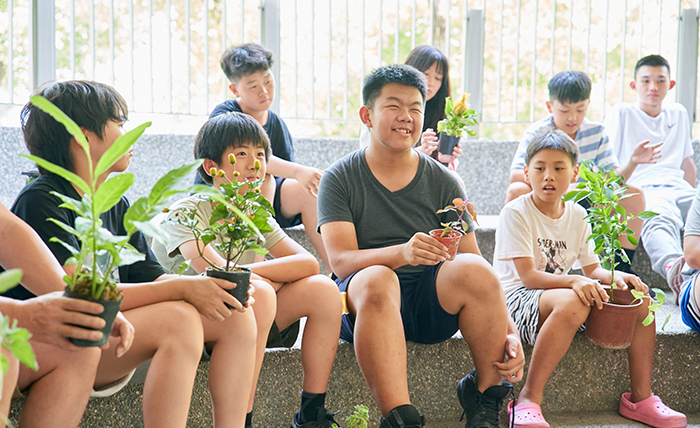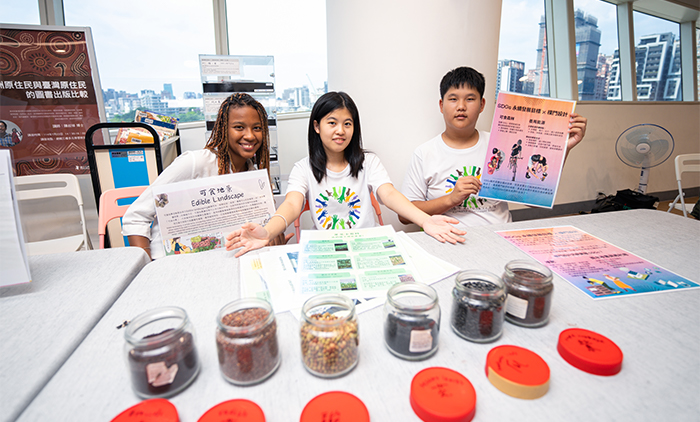Written by/Chung Pi Fang
Photos provided by the Taian Industrial High School、Hualien Girls' Senior High School
Lukang Junior High School、Dawu Junior High School
The inspiration and strength that reading brings can transcend geography and age, leaving a lasting resonance in the hearts of young people. Across Taiwan, schools are finding innovative ways to promote reading — whether by sparking motivation through challenges and recognition, expanding perspectives through interdisciplinary projects and teacher-student exchanges, or building connections between local culture and global issues. Reading has become a vital bridge for teenagers to acquire knowledge and life experiences, enriching their growth in countless ways.
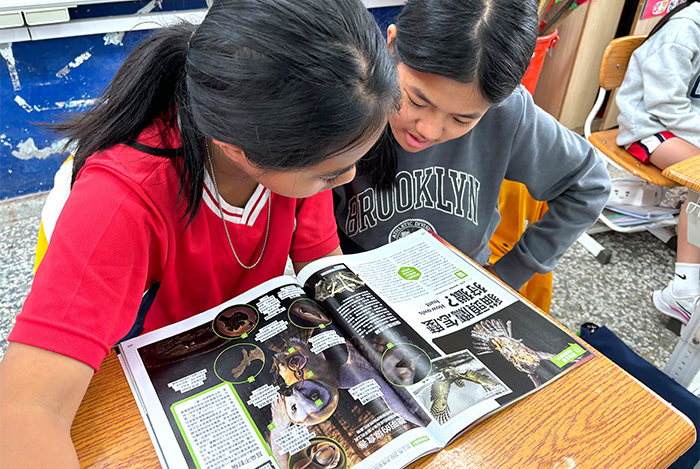
In an era defined by digitalization and fragmented information, teenagers’ reading habits are quietly evolving. The internet, short-form videos, and real-time information have reshaped how they acquire knowledge and transformed how schools promote reading. Reading is no longer confined to lengthy printed texts — it now takes on interdisciplinary, multimedia, and interactive forms. The National Library of Public Information (NLPI) has long been committed to supporting reading development in schools. In this feature, it visits four campuses — in Taipei, Hualien, Changhua, and Taitung — to explore how reading is taking root and flourishing in diverse environments.
On-Site Observations of Teenagers’ Reading Habits
The reading atmosphere on campus reflects how factors such as region, school type, and student backgrounds shape reading habits and preferences.
At Taian Industrial High School in Taipei — an urban school with a fast-paced environment — students’ expectations of reading are closely tied to self-challenge and a sense of achievement. Reading instructor Chou Chia Lan observes that instead of requiring students to spend long hours buried in books, it is more effective to design small, incremental goals that allow them to gain a sense of accomplishment even within limited reading time.
At Hualien Girls' Senior High School in eastern Taiwan, the reading atmosphere is entirely different. The school offers gifted classes in languages, science and mathematics, and fine arts, resulting in a highly diverse student body — some focus on scientific research, others on artistic creation, and still others on languages. According to Hsieh Wen Ching, director of the school library, this interdisciplinary background broadens students’ reading interests. “As long as someone recommends a book, they are willing to explore even unfamiliar fields,” she notes. This diversity of reading choices becomes a bridge for students to share their interests and perspectives with one another.
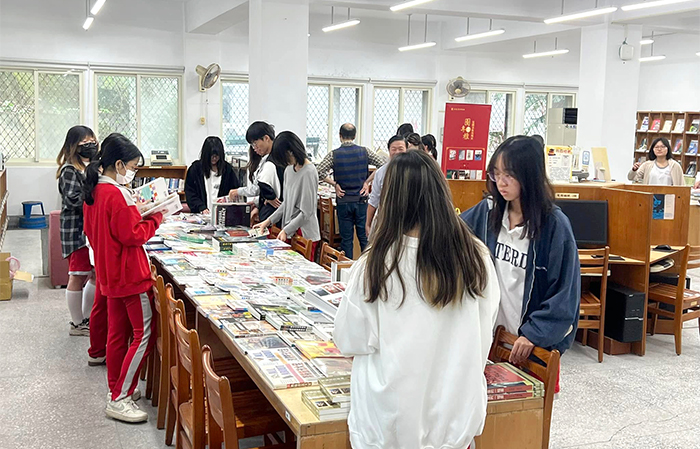
At Lukang Junior High School in Changhua, located in a community rich in cultural heritage, 14-year-old students are still in the early stages of shaping their worldview. Reading instructor Ni Mei Yuan emphasizes that students at this stage need more concrete contexts and actionable connections. To address this, she designed a cyclical approach — Read–Do–Reflect — integrating reading with hands-on activities, transforming knowledge into a force for social participation.
At Dawu Junior High School in Taitung, where resources are limited, students often have weaker language foundations and less patience for long-form reading. The school has chosen to start from the basics: “Whether it’s a comic or a picture book, as long as they are willing to open the first page, there’s a chance to plant the seed of thought,” says reading instructor Lai Yi Li. She believes reading is like a bridge to the world, giving students the opportunity to see beyond their immediate surroundings. With the right entry point, reading can become a shared language for engaging with the world — whether in a bustling urban high school or a quite rural junior high.
Challenging Yourself Through Reading: Finding a Sense of Achievement in Honor
In technical and vocational schools, promoting reading often faces the dual challenges of limited time and low student interest. At Taian Industrial High School, the school has chosen to make “challenge and honor” the driving forces behind its reading initiatives. One of the most representative programs is the “Taian Golden Book Award Certification” — an in-school reading and writing program that has been running for 15 years. Students must attend intensive training sessions, read designated books, and write book reviews within a set period. Many students who initially had no reading habits eventually began actively asking for book recommendations once they completed the program.
Chien Shih Jung, a second-year student at Taian, shared that the most memorable part of participating in the Golden Book Award was not winning, but “being understood.” She recalls a time when a review she had spent an entire night writing was read aloud line by line by her teacher the next day, followed by in-depth questions and discussions. “That experience made me realize that reading is not just an assignment,” she said. “It’s a gentle touch on the soul — a way of being truly seen.” This experience helped her understand that reading can become a powerful medium for deep communication between teachers and students, and between people in general.
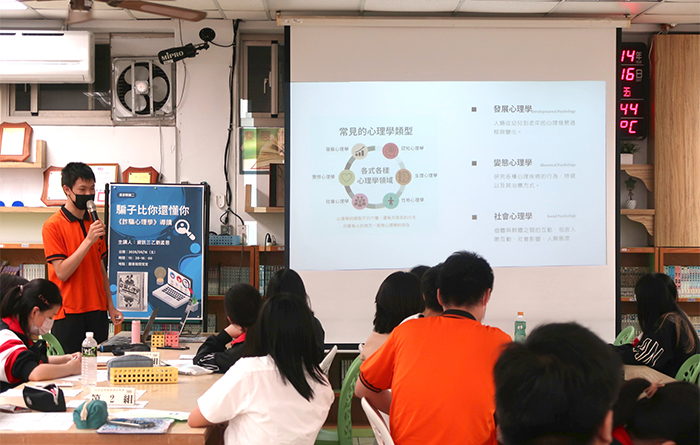
Reading instructor Chou Chia Lan agrees, noting that the greatest impact of the Golden Book Award is that “students see their own abilities improving. They go from worrying about falling behind to ultimately earning certification, and that sense of achievement often carries over into other areas of learning.” Chien echoes this sentiment, adding that reading programs at school are not just about reading books — they help her upgrade her “system thinking.” For example, professional textbooks in engineering teach her how to solve problems, while literature reminds her to ask, “what the problem is.” These skills, she says, give her greater confidence to face future challenges.
To ensure reading becomes more than a short-term sprint, the school also established thematic reading clubs, where a student leader selects a book and guides participants through group discussions and reflections. This approach deepens their impressions through oral expression and critical thinking. The reading clubs also deliberately mix students from different departments, giving science- and engineering-oriented students a chance to hear humanistic perspectives while sharpening their logical thinking in technical fields.
Another highlight at Taian is its collaboration with the digital platform “Youth Books.com”, which allows students to share book reviews of titles they’ve read. Looking ahead, the school plans to further strengthen cross-disciplinary integration, combining reading with project-based learning and technical competitions. This will help make reading outcomes more relevant to the core of vocational education — and inspire students with sustained motivation.
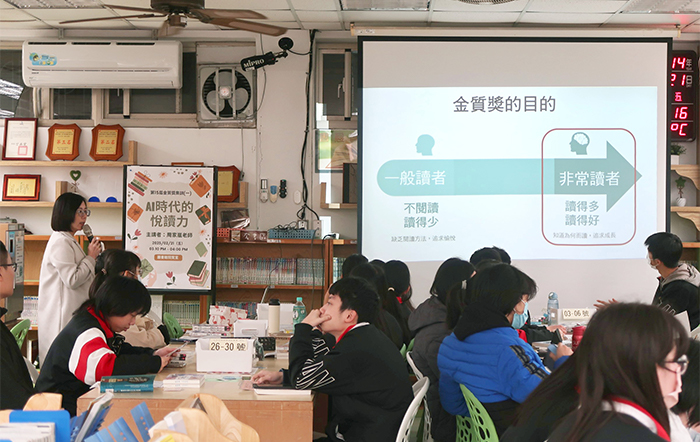
Bringing Book Recommendations Across Subjects and Disciplines
Although students at Hualien Girls’ Senior High School read widely, they often develop “reading biases” — for example, reading only novels or sticking to a single genre — which can limit the breadth and balance of their knowledge. To address this, Hsieh Wen Ching, the school’s library director, and her team created the “Reading Empowerment Workshop.” The program invites teachers from various disciplines to serve as reading guides, leading students into fields such as science, humanities, arts, and social issues.
The workshop started as simple teacher-led sharing sessions but soon evolved as teachers took the initiative to design slides, plan discussions, and exchange reflections afterward. This collaborative approach fostered a lively atmosphere of mutual learning among teachers and enthusiastic participation among students.
This environment has already nurtured a group of “loyal fans.” Some students attend every session, while others become deeply engaged after discovering a particular book. The reading activities have also reshaped the teacher-student relationship. “Outside the classroom, students discover that their teachers are approachable and fun. Sharing the same books creates new opportunities for interaction, narrowing the gap between them,” Hsieh Wen Ching explains. Through exposure to diverse books and topics, students are now able to conduct in-depth research on public issues during their projects, which greatly benefits their future academic choices and career planning.
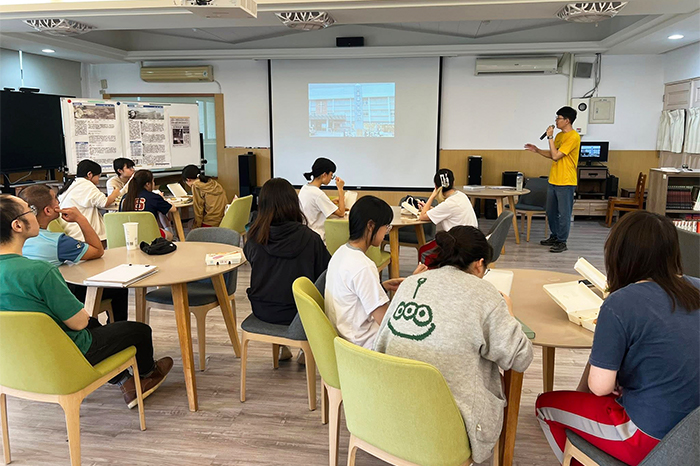
Another regular library initiative is the “Good Books Weekly Bulletin.” Each week, a teacher from a different subject area recommends a favorite book and shares the reason behind their choice. The library then turns these recommendations into posters displayed on bulletin boards. This not only gives students opportunities to discover books they might not have chosen on their own but also encourages meaningful dialogue between teachers and students. “Students often check out books after reading a teacher’s recommendation, and teachers, in turn, see how their influence extends through students’ feedback,” Hsieh Wen Ching says with a smile. “Sometimes students come to tell me they’ve fallen in love with a completely new subject because of a teacher’s suggestion — and that’s the most rewarding part of our work.”
In addition to the bulletin, the school also runs a program called “Xin-Yue Hua-Nü” (“Joyful Reading at Hualien Girls’”), which uses guided worksheets to help students who don’t know how to approach a text. By prompting them with focused questions, the activity helps them develop thematic reading habits and build confidence in navigating new books.
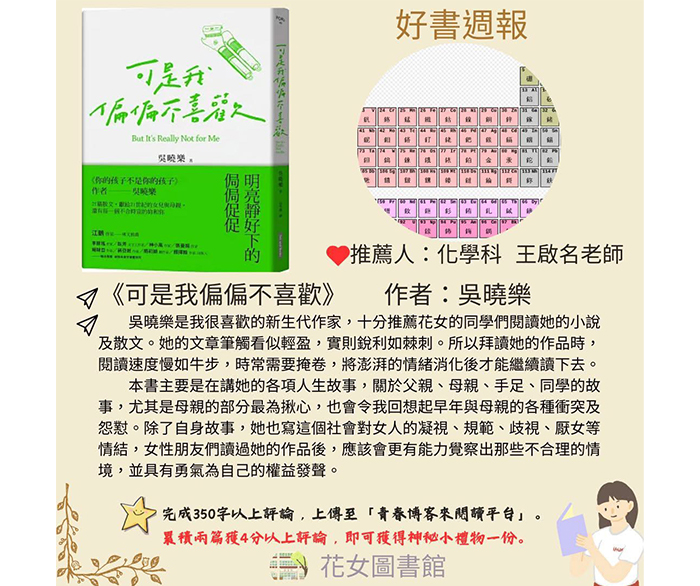
A Reading Blueprint from Local to Global
Lukang Junior High School, winner of the 2025 Ministry of Education “Reading Rock School” Award, embraces the “A Gathering of Book Fragrance, Building Bonds at Lukang.” Rooted in the rich cultural heritage of Lukang town, the school’s reading initiatives gradually expand to incorporate global issues and technological aesthetics. Reading promotion teacher Ni Mei Yuan explains that from the very beginning, the team aimed to break away from traditional formats by integrating board games and puzzle-solving into reading activities, allowing students to build engagement through playful contexts.
One of the most anticipated activities on campus is the “Storyteller Board Game Competition.” Students must apply what they’ve learned in reading classes, combining the scenarios and clues on the game cards while alternating roles as listeners and storytellers during gameplay. The activity tests not only comprehension and memory but also stimulates creativity and expressive skills. “Developing students’ ability to convert between text and images is one of the key goals of our reading curriculum,” Ni Mei Yuan explains. “During the game, students must transform visual information into text and then articulate it verbally. Beyond the fun of competition, this significantly enhances peer learning and reading motivation.”
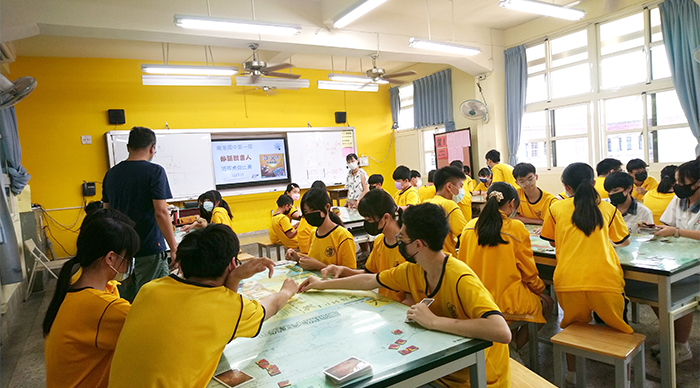
Another student favorite is “Media Showdown,” a dynamic activity in which students take on the roles of journalists and editors. Working under pressure, they must fact-check, write, and publish news stories based on given clues. This competition blends information literacy with teamwork, training students to critically assess media sources and organize information quickly. It also transforms reading from a static page-turning activity into one that connects directly with the real world.
“Although students show high levels of engagement in game-based reading activities, long-form reading and deep thinking remain challenging,” Ni Mei Yuan acknowledges. To address this, she has introduced a variety of reading strategies, combining them with project-based learning and cross-curricular courses to help students discover the multiple values of reading.
For students with low reading achievement, Ni Mei Yuan emphasizes that “incomplete reading is still reading.” Even if students do not finish traditional long-form books, participating in related activities and acquiring information through videos, images, or interactive formats can still serve as an entry point to reading. Looking ahead, the school plans to integrate more digital resources and interdisciplinary projects into the curriculum and continue hosting themed reading programs — including disaster preparedness, environmental action, and global issue discussions. Through this ongoing Read–Do–Think cycle, students will be able to transform knowledge into real-world action and build deeper connections with the world around them.
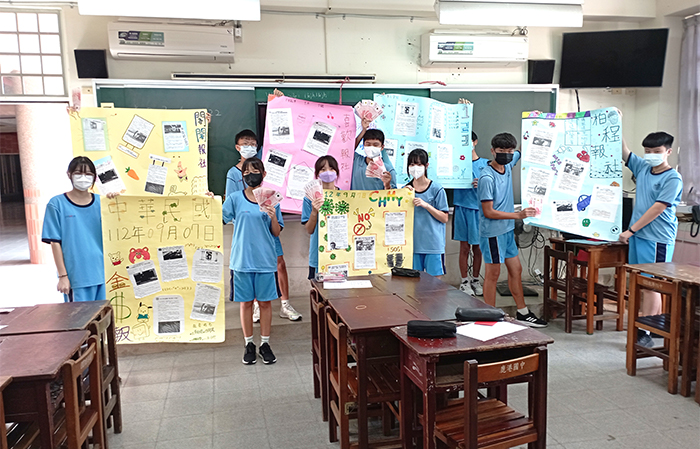
Building a Bridge to the World Through Reading
“Limited resources, insufficient vocabulary, and low endurance for long-form reading are common challenges faced by schools in non-urban areas,” says Lai Yi Li. Located in the southern part of Taitung, Dawu Junior High School decided to address these issues from a structural perspective by officially incorporating reading classes into the school curriculum, ensuring that every student has dedicated reading time and guided instruction. The program is divided into two stages: the basic stage starts with reading aloud and summarizing, helping students become familiar with text content and structure; the advanced stage guides them to ask questions and express their opinions, gradually cultivating critical thinking and communication skills.
Because the school places strong emphasis on the integration of literacy education, the reading materials span a wide range — from picture books and comics to popular science articles, news reports, and bilingual novels — allowing students to find resonance across different formats and themes. Through the PaGamO digital learning platform, students’ complete literacy-based tasks online, while teachers use backend data analytics to offer targeted support and guidance.
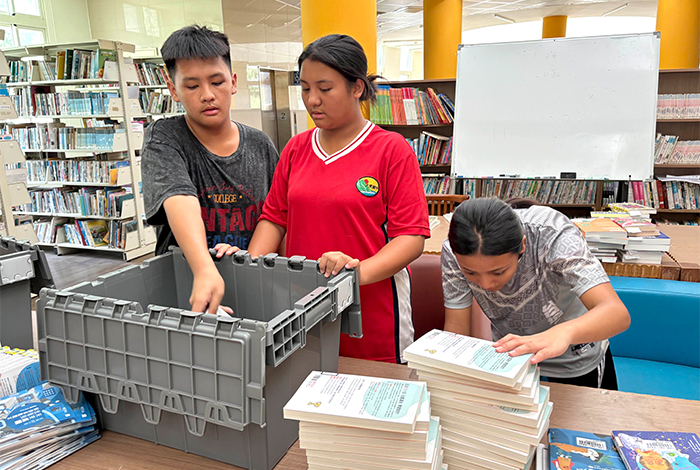
To promote bilingual reading, the school organizes group performances of English songs and encourages students to create their own scenario-based comics, helping them not only “understand” English but also integrate it into daily life. Collaboration with National Taiwan University on the “International Buddy Program” further enables students to engage in cultural exchange with foreign exchange students, significantly improving their English comprehension. “Many students have shown noticeable progress in both reading and speaking confidence within just one year,” Lai Yi Li notes.
Among the school’s various initiatives, the “Tomorrow’s Storyteller” competition in the Role-Model Reading Program is the most anticipated reading stage for students. Participants must first read a book, summarize its key points, and then present it to the entire school — or even on a national stage — in their own creative way. Some combine illustration and dramatization, while others create short videos. Gao Sheng Ya, who won third place nationwide in the junior high school division, shared: “The preparation process was stressful, but the applause and recognition I received became the greatest motivation to keep reading.”
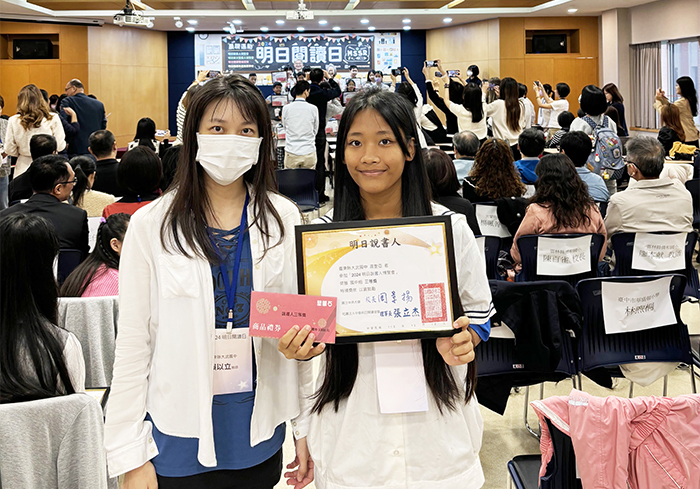
The school integrates its diverse reading initiatives into the curriculum and plans to invite foreign English teachers in the future to conduct immersive lessons, so students encounter English beyond their language classes. “For children,” Lai Yi Li says, “reading is not just about accumulating knowledge — it’s a window that opens up the world.”


